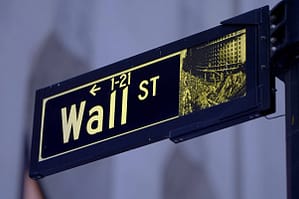Clem Chambers, founder of ADVFN.com and one of the City’s most well-known characters, answers your questions
Question: “Hedge funds and investment banks use robots to trade stocks. What impact do these high-frequency trading ‘warbots’ have on the markets?”
High frequency trading is just another attempt to beat the highly efficient market – yet the truth of the situation is different from the perceived threat currently creating controversy.
It’s natural to think that if you trade faster, you can beat a market opponent to the punch. Lightning speed means you can run rings around others and like a cheetah preying on slower animals.
The nearly perfectly efficient market means there might be some money to be made yet this edge will quickly be neutralised by others playing the same game.
…unless someone is cheating.
High-frequency trading came to prominence due to “flash orders”. Flash orders were considered by many in the market to be cheating. Certain traders were given advanced notice of other people’s orders on their way to the market. This micro-second advanced notice was enough to sweep up cheap shares and feed them to the flash order. This let high frequency traders make a bit of money on each of these orders. Small profits turned into huge ones when repeated hundreds of times a day. This felt like a scam and was stopped.
It was a scandal.
It was the advanced notice given to a sub-set of the market that created the inefficiency that allowed this profit – not simply the raw speed of execution. It was outrageous that exchanges should give advanced warning in the first place. Once this edge was removed, speed was irrelevant for this “strategy” and the free ride stopped. However “high-frequency trading” had by then earned its infamy and has kept it.
This story might not sound convincing enough you say? Surely trading at trans-human speeds is a way of making money?
If a computer can read news, interpret it and jump on a bandwagon before anyone else surely it would give high-frequency guys an edge. You would think so, but having studied the machine-readable feeds of key players myself, none demonstrated response to news in a way indicating superfast traders were getting to the news in microseconds. So, if in theory this is possible, up until recently and over an extended period of time, this is not what is driving the market.
Another question to ask, “who is the most successful, richest trader of all time?” The answer of course: Warren Buffett. An ultra-low frequency trader. Meanwhile, where are the incredibly rich day traders? Apart from the emotional logic, why should faster be better when human plus speed normally equates to hospitalisation?
Of course, the reason high-frequency trading is in the headlines is because it’s so “sexy”. You don’t have to be too bright to conclude that high-frequency trading sounds like “cheating” – and we all understand cheating is a tried and tested way to win. Winning the financial game by cheating should be a formula for infinite wealth. What could be more hypnotic than that prospect?
As such, “high- frequency trading” has all the spice and dazzle required to sell a hedge fund to certain kinds of investors.
The pitch is basic and well-rehearsed: “Invest with a high tech hedge fund, full of pointy head geniuses. We are trading at the speed of light. Our machines are feet away from the stock exchanges computers. Lights, cameras, action!”
City marketing men always “sell the sizzle not the steak”. High-frequency trading is the latest reason to be parted with 2 and 20 per cent as the hedge fund industry piles on the smoke and mirrors.
High-frequency trading is just the kind of slick story that lures in the same kind of investors that fell for Bernie Madoff and the legion of funds that lost other peoples shirts while skimming off fortunes.
Once you leave the financial Barnum’s behind, high-speed trading robots sit in the markets and work out large orders by chopping them up into manageable pieces and dealing them out over extended periods. This tranching of large trading blocks is necessary to get the best price for the client. Some robots are working on complex positions that are in practice, large insurance policies for institutions with huge exposures needing to cover them with hedges. Market robots doing this grunt work are overwhelmingly the major component of “high-frequency trading” and for that matter, the overall trading on the world’s markets.
This “high-frequency trading” is a benign phenomenon that improves the efficiency of the market, but it’s not what people think of when they hear the phrase.
What is feared when it comes to high-frequency trading is that its capacities are effectively market abuse. Market abuse is illegal. It’s the job of regulators to spot activities that disrupt the market and disallow them. Pure speed however, is not in itself abuse. Like all tools it can be used as a weapon, but that’s no different to any number of potential risks that will always stalk the market.
Clem Chambers is the founder and chief executive of ADVFN.com, which offers stock quotes, charts, news, FOREX, futures & options and stock screeners on more than 70 stock markets worldwide. He is also the author of 101 Ways to Pick Stock Market Winners.





Leave a Comment